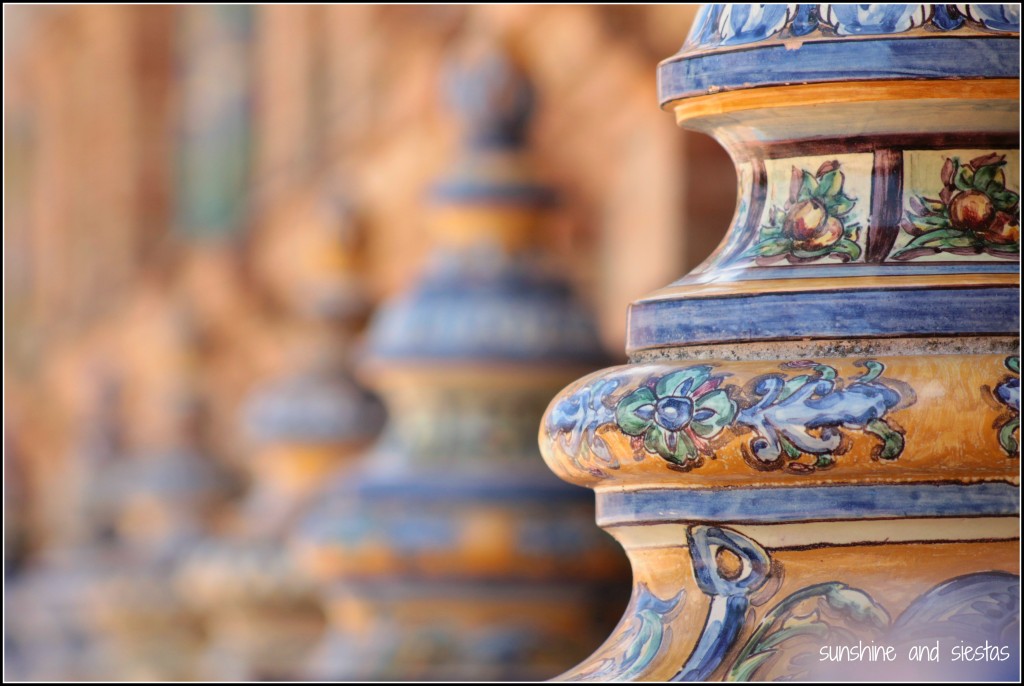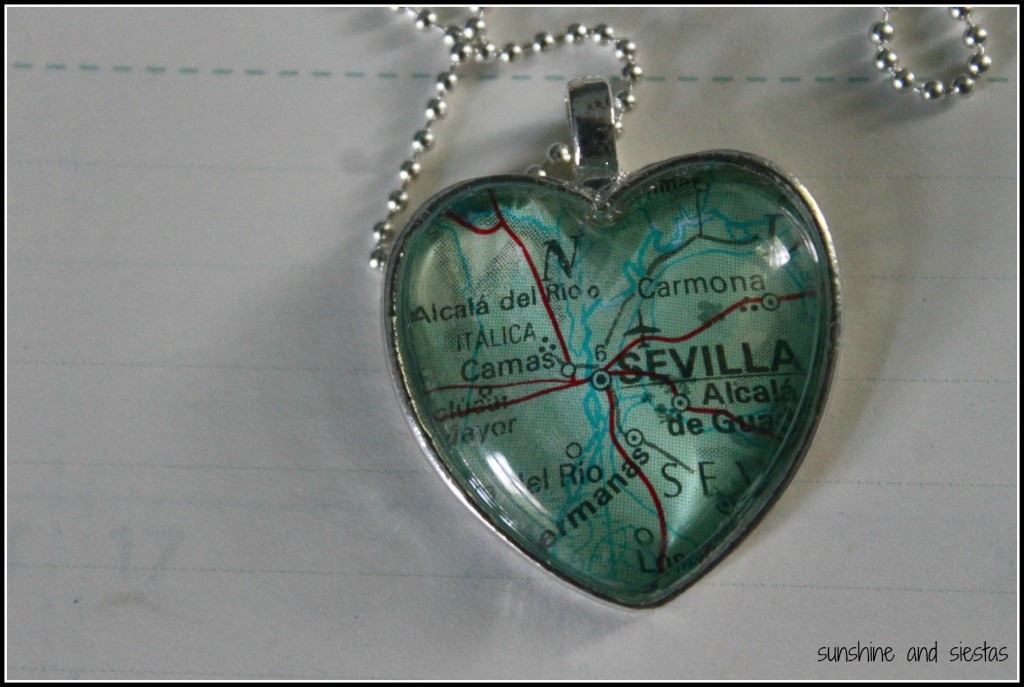Lisa’s skype call was full of nervous questions about what to pack and how to arrive alive to Sevilla. I’d be about to take the DELE when her train arrived, leaving her with a few hours to wander around town and grab something to eat, per a detailed list of suggestions. She quizzed me on names of places she might need to stop before our rendezvous: estación de autobuses, aseo, farmacia…
Her last question: “If I want to have a beer, do I just look for a beerería?” She wasn’t too far off, doing some linguistic gymnastics as I reminded her of the word for beer and finally forming the word for bar: ser-vay-suh-ree-ya. Cervecería.
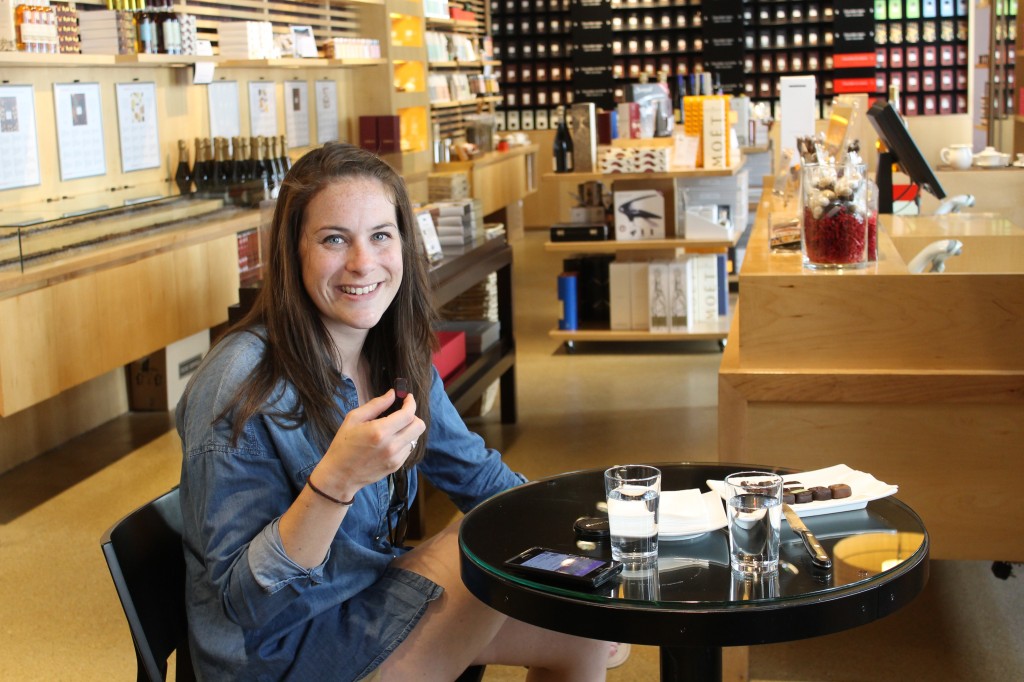
One of the biggest learning curves for people moving to Spain is knowing where to shop and what you can find there. That there’s a more convenient place to buy stamps than the post office, or that you’re better off picking up pens and pencils at a copy shop. There’s a specific store for undergarments (pick up a spare zipper or some ribbon while you’re there, too), another sells only fish and sea creatures, and a cafetería is a good place to stop if you want more than just coffee.
Typically denoted by a clue in the word (hence ‘cerveza’) followed by the -ería, here’s a Guiri Guide to the -erías you can find in Spain:
Food & Drink
The –erías are rife when it comes to wining and dining in Spain, and nearly every class of food is followed by the suffix.
Bocatería: Sandwich shop.
This is a general term for anything made with two slabs of a viena, though Spanish sandwiches and subs tend to be severely lacking in ingredients. You can usually get food to go with a drink or some chips.
Cafetería: Cafeteria.

This place has just about everything – you can have a coffee or a cold one, a sandwich or a sweet. Cafeterías are a happy mix between bar and coffee shop, and they’re a good go to if your tripa rumbles between lunch and dinner. Have your cake and eat it, too, which is perfectly acceptable here.
Carnicería: Butcher shop.

Take a number and wait until you’re called to get any sort of beef or pork cut. Your butcher might also have less common meats, like horse or rabbit, and expect to find tripe, cow tongue and pig feet. For good measure, of course. In Madrid, these places are usually called casquerías.
Many carnicerías will also package meat for freezing, or can clean the cut for you.
Cervecería: Beer bar.
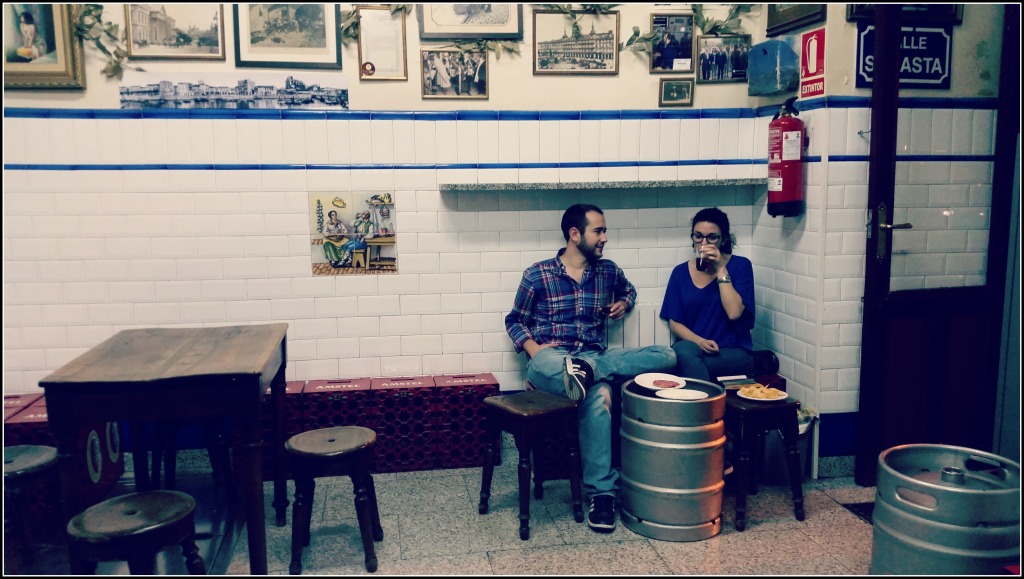
Perhaps my most frequent stop outside of the grocery store, the cervecería (or beerería, as Lisa says) serves beer, wine and soft drinks, and usually a limited menu. Think stark white walls, stainless steel countertop and plenty of abuelitos. What sets these establishments apart from another bar is that the bares in Spain tend to have larger menu options.
Churrería: Churros stand.
Just smell that hot oil frying, and you’ll know you’re in the right place. Many bars also sell churros, particularly for snack time and weekend breakfasts, or even fried potato chips.

Freiduría: Fried fish joint.
Noticing a trend with fried food? Freidurías will throw anything breaded – namely fish and croquettes – into hot oil and serve it up in a paper cone for you. As one of Seville’s food staples, pecaito frito is fast food that doesn’t make you feel as guilty. Plus, it’s practically requisite to eat fried fish on the first night of Feria and Fridays during Lent.
Note that freidurias are closed on Monday, as no fresh fish comes into the markets.
Frutería: Green grocer’s / fruit stand.
You’ll find all of your fruits and vegetables here, along with nuts, soup mixes and a pumpkin for carving at Halloween. Here you can look but don’t touch – the greengrocer will usually handle the goods for you.
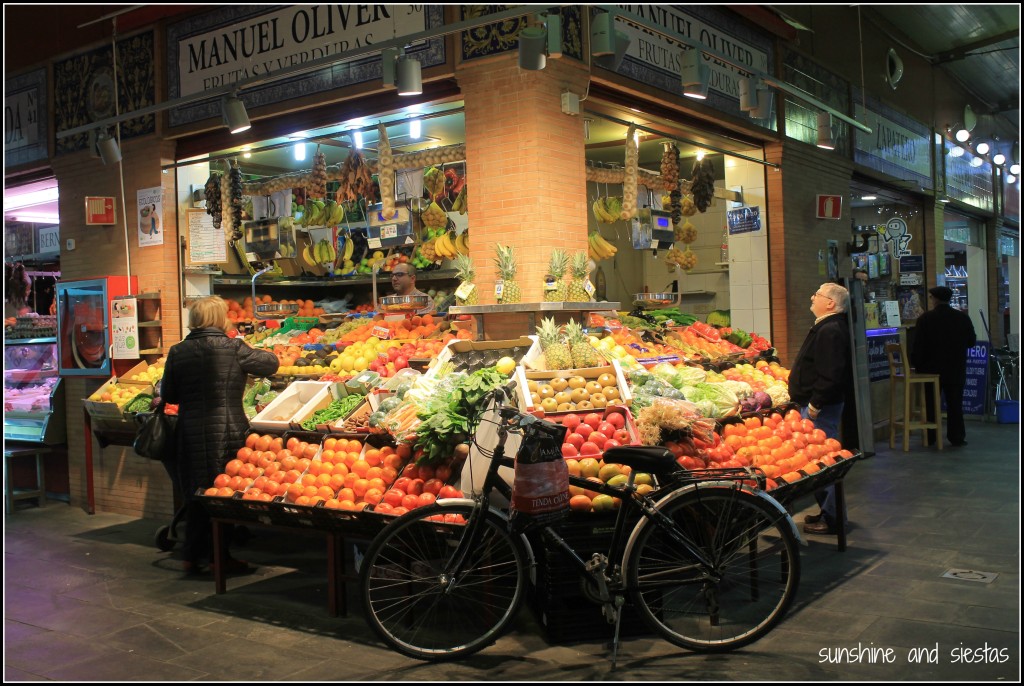
Fruits and vegetables are seasonal in Spain, so don’t look for strawberries in August or watermelons in February. More exotic fruits like mangos and avocadoes can usually be found at market stalls.
Heladería: Ice cream parlor.
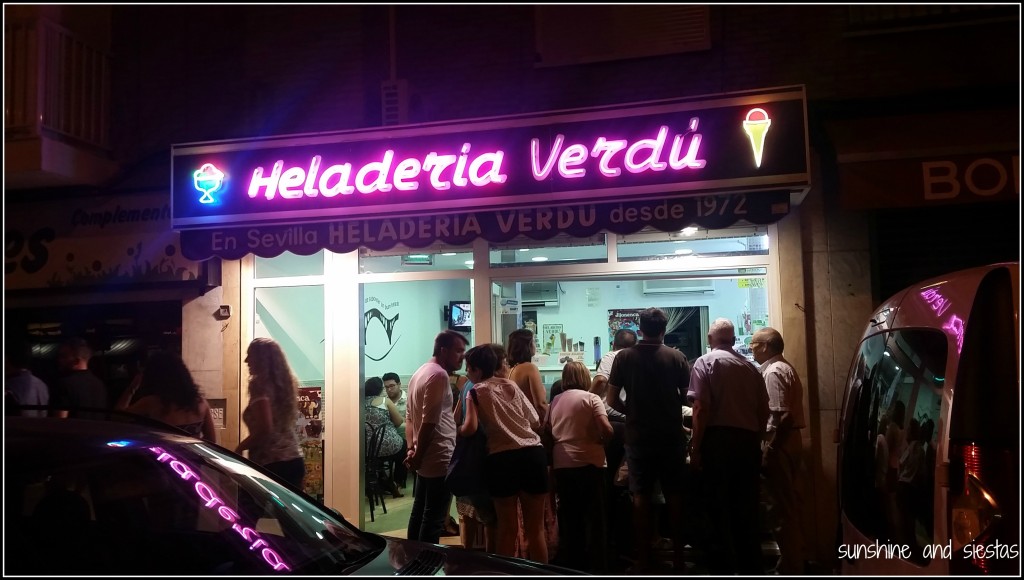
If you’ve ever been to Spain in the summer, you’ve probably frequented an heladería. Many will serve more than cones and sundaes, with offerings ranging from pastries to mixed drinks. Because a G&T tastes better with dulce de leche ice cream.
Panadería: Bakery.

A meal in Spain wouldn’t be a meal without copious amounts of bread, and panaderías seem as ubiquitous as ATMs. My go-to local bakeries also serve as mini-marts and offer pastries, snacks, sandwiches and even cold beer.
Pescadería: Fishmonger’s.
For the catch of the day, look no further. You can buy fish and shellfish and have them cleaned or chopped in any way you like. Like the freiduría, the pescadería is always closed on Mondays, meaning the market is a ghost town at the beginning of the week, and offerings – as well as prices – will change daily.
Pollería: Poultry shop.
If your butcher doesn’t sell fowl, a pollería will, along with eggs, turkey and duck – I get my Thanksgiving turkey from José in the mercado and he’ll even pull out those last few stubborn feathers and its innards. Alternately, the chicken shop may be a roasted chicken distributor, too, AKA your Sunday night cooking solved.
Repostería: Pastry shop.
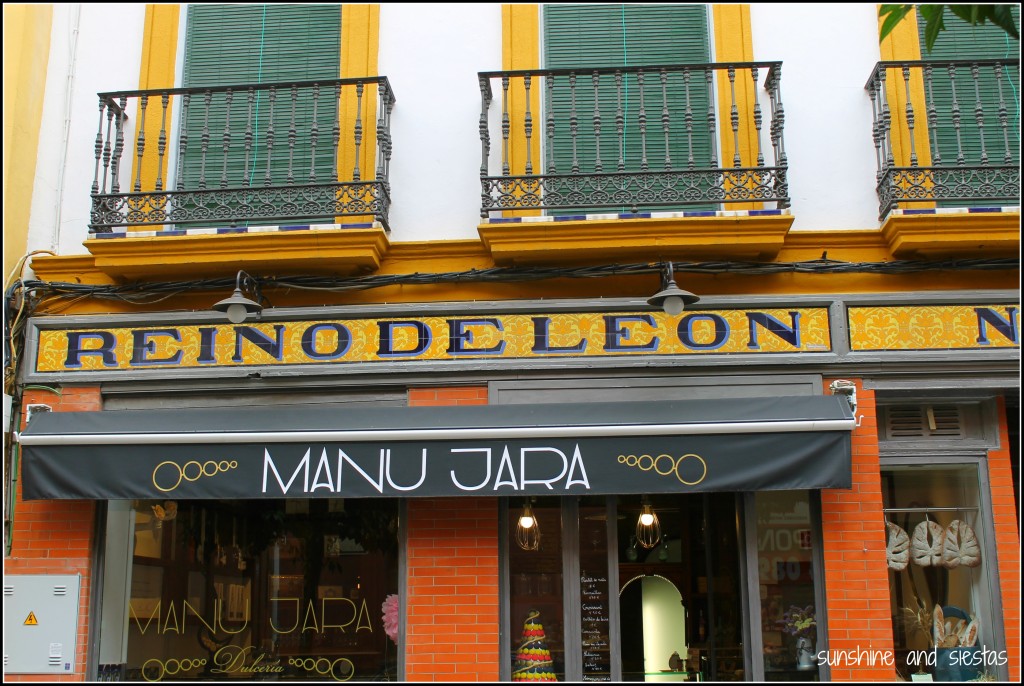
If you see a line out the door around January 5th, chances are you’re staring down a repostería, or a fancy pastry shop. While I’m not keen on Spanish sweets, all of the abuelitas congregate here to buy cakes and sweets, though it’s different from a cafetería in that it usually doesn’t have room to snarf the pastel with a coffee or anisette.
De Compras
Copistería / Papelería: Copy shop / paper goods store.
I remember a crisis of not having enough pens to write down my observations of Seville, post-study abroad, in a travel journal. It was my first time in Seville and I’d run out of ink, so I went to the sure-fire place to find them: the Corte Inglés. A simple pack of three Bics put me back 3,50€, or the price of a beer and tapa around the corner.
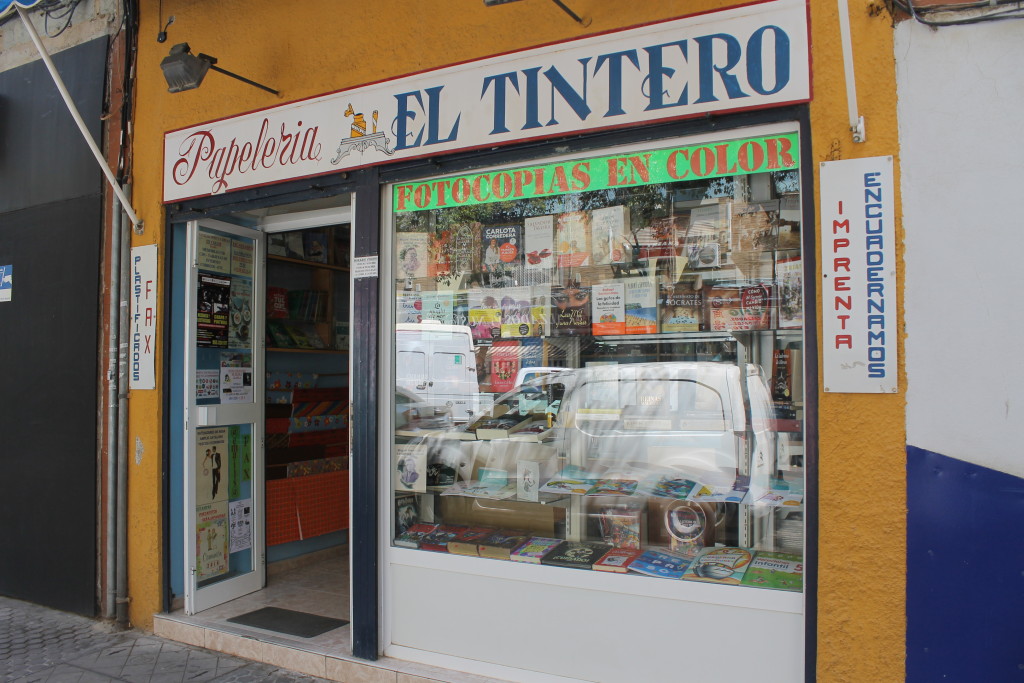
Copisterías are commonplace, and they do more than print, scan and fax: you can find any school supply you can think of, buy political and geographical maps of Spain and the EU and go insane over the sheer amount of colors and sizes of plastic wallets the peddle. Nope? Just me? Imagine it like an all-ages Kinkos.
Papelerías are much the same, just with no fancy copy machines. What they lack in inkjet they make up for in beautiful journals, fancy wrapping paper and a rainbow of highlighter colors.
Ferretería: Hardware store.
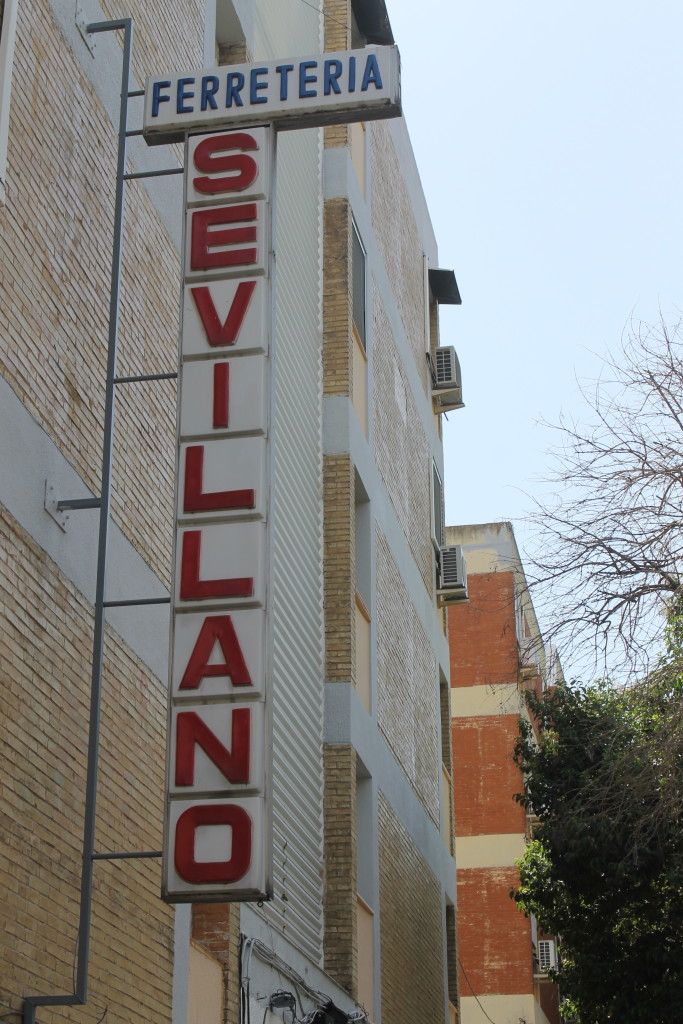
My best friend back home is part of a hardware store dynasty, and I’d often frequent with my handyman father. Spanish ferreterías are a bit backwards because there are lots of small items, many will ask you to place an order and they will find it for you. This is the place to get keys cut, buy tools and even find that old-lady carrito you’ve been eyeing. Some ferreterías are specialized in cookware, others in making plaques and signs, and even others sell kitchen goods.
Leroy Merlin is my new drug.
Florestería: Florist.
It may be easier to pick up a few spare carnations from the peddlers on the street or the venta ambulante, but florists still exist. Just don’t expect to buy satchels of seeds here – floristerías are strictly for flower arrangements and decorative bits and bobs.
Librería: Bookshop.
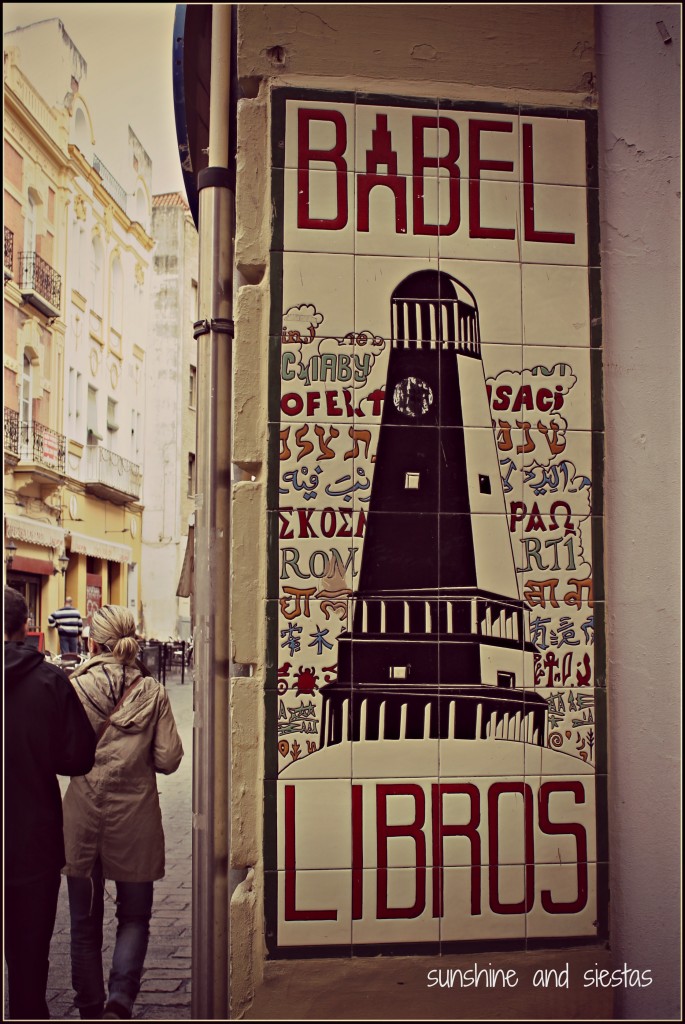
Don’t fall victim to this false friend – a librería is a place to buy novels and books…and the random book bag, bookmark or greeting card. You’ll find them clustered near schools and they generally have all of the required reading textbooks for private schools on hand.
Lencería: Lingerie shop.
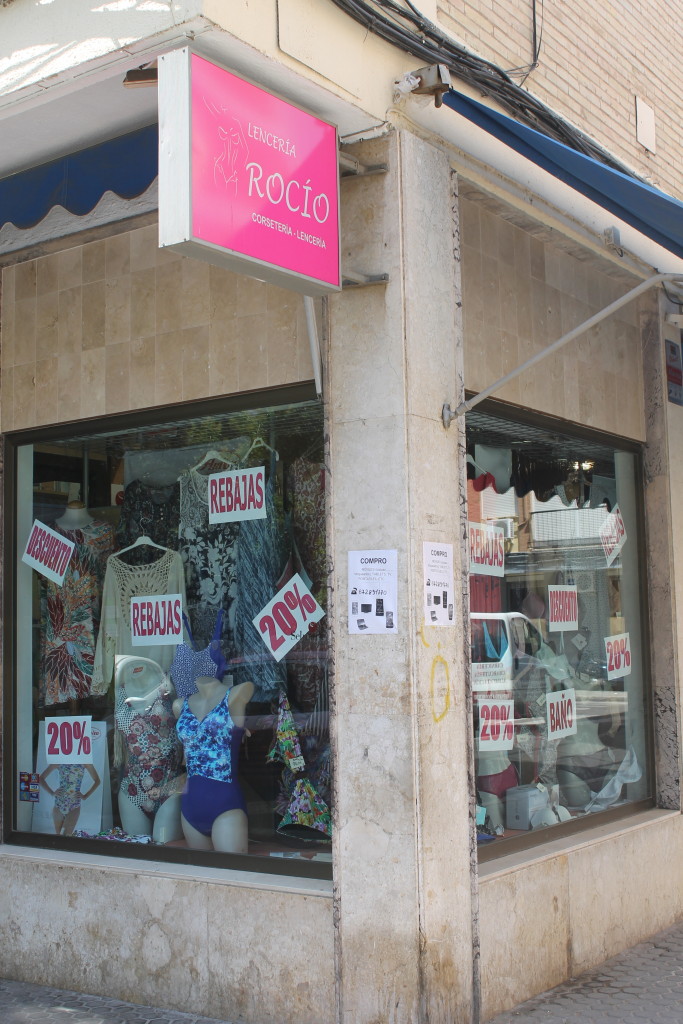
Before you get your panties in a bundle (ha!), remember that lencerías sell a bit more than undergarments. General hoisery is a hot commodity come Autumn, and I’ve also picked up sewing items like thread and buttons here, along with yarn for crochet. Just be sure to push past the old ladies who wouldn’t be caught dead buying their stockings in Calzedonia (they also sell push-up leggings there, DIOS SANTO!)
Peluquería: Salon.
Much like their American counterparts, salons in Spain are a haven for gossip and hairspray. I can’t say enough about Top Image in Seville, where I entrust my locks and secrets to Loli – yes, I plan my visits to Seville around her openings. If you’re looking for a beauty parlor that has a larger array of services, try a spa o gabinete de belleza. A beauty cabinet. Men head to a barbería (as in the Barber of Seville, of course!) or peluquería de hombres.
Perfumería: Drugstore.

The first time my Spanish roommate sent me out to the grocery store alone, she told me to pick up all of the cleaning products, detergent and toilet paper at the perfumería around the corner from our apartment. Once I fought my way past the fragrances and makeup, all of the cleaning products on the market were stuffed into shelves, from toilet bowl cleaner to air fresheners.
But I accidentally bought myself conditioner instead of shampoo. Those were rough, greasy times. I find that supermarket prices are more appealing, and there are only so many little abuelas I can fend off on any given morning.
Semillería: Nursery.
Maybe it’s just because there’s one on my block, but this is the sort of nursery where you can buy seed satchels and…snacks? Most of the rest of society go to a vivero. And, for the record, I’m still a little wary of wandering into the semillería.
Tintorería: Dry Clearners.

Not to be confused with lavandería, or laundromat, tintorerías are far more common in Spain than a coin-operated bank of washers and dryers. Check those tags from Zara – there’s a lot more delicate material and non-washables on sale, and Spanish washing machines are notorious for tearing apart clothing!
Zapatería: Shoe store.

Most of my disposable income went to shoe shopping when I first moved to Spain. I was doing a great deal of walking around town and quickly wore out the soles on all of the ballerina flats I bought. Be aware that European shoes have different number sizes than in the US, which leads to a whole lot of confusion and squished toes on your first few trials.
The non -erías
Ok, so I lied – not all shops and eateries end with -ería. Several other important shops and stops exist, though many with not-so-clear perameters as to what they sell.
Farmacia: Pharmacy.
Denoted by a green cross, farmacias sell strictly prescription and nonprescription drugs. Well, until you add reading glasses, walkers, diapers and pacifiers. Clients tend to be loyal to their local pharmacy, so products may vary according to location. Do keep in mind that should a pharmacy not have what you need, you can have it ordered for next day service, and there are 24-hour pharmacies in every large urban center.
Tobacos / Estanco: Tobacco shop.

My roommate once asked me if I wouldn’t mind picking up an application form for a university scholarship while she was sick. I marched over to the university, stood in line at the purser’s window and ask for the solicitud, only to be told it could be procured at the tobacco stand across the street.
….ok.
Emblazoned in crimson and gold with a large T announcing them, tobacco shops – usually called estancos – sell packs and cartons of cigarettes, pipes, loose-leaf tobacco, lighters and sometimes even shishas (hashtag Spain is different). But it’s also a shop I frequent to buy stamps and envelopes without the long line at the Oficina de Correos, and they also have copies of rental contracts, declaraciones jurídicas and other forms needed for everyday Spanish bureaucracy.
Oficina de Correos: Post Office.
Every address in Spain is assigned to a post office, and Correos is the national mail service, owned and operate by the Estado. For whatever reason, your assigned office is never the closest one, and no matter when you go, there’s always a line worse than waiting to see the belén on Christmas Eve.
Mail service is only the tip of the iceberg here: you can also register to vote, pay traffic fines and utility bills or send money by wire. Just take a number and wedge yourself between the other 100 people there any given morning.
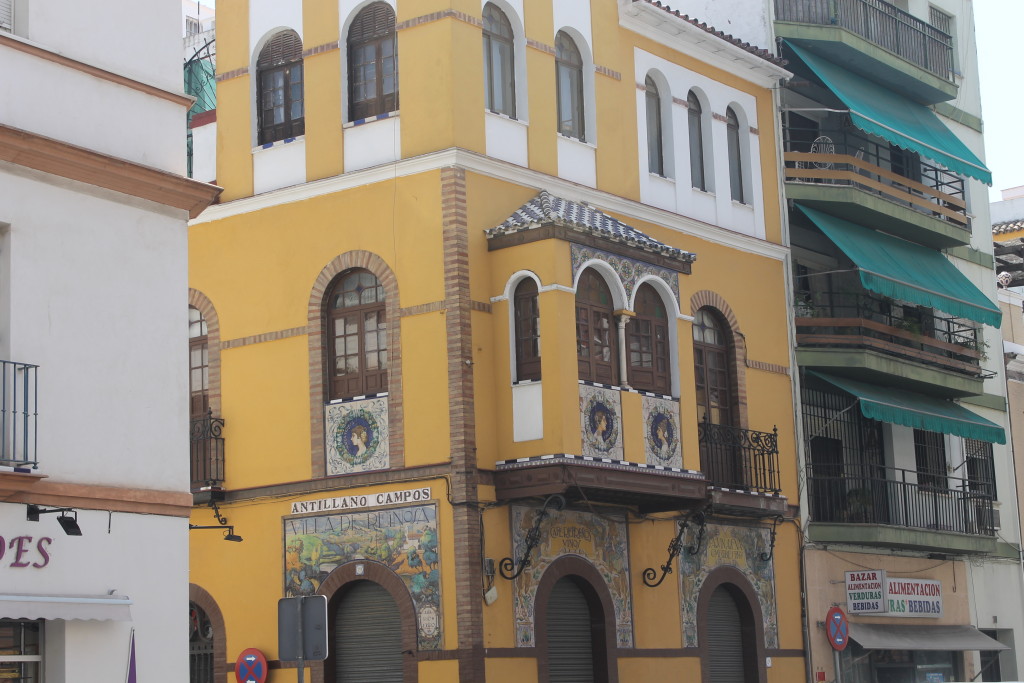
Supermercado: Supermarket.
Though the older generation still prefers buying at their market and small shops (this abuelita included), supermarkets are one-stop shopping. Imagine the shock and awe when you walk into an American superamarket for the first time in 10 months after having somehow subsided on whatever was packed into a two-aisle ‘supermercado’ in your neighborhood.
I was so spoiled living next to an Alcampo for four years, but have come to relish buying from the market a few blocks away.
Alimentación / Bazar: Mini-mart.
There’s really no way to describe these sorts of shops. Sometimes they have food, sometimes they don’t. Many sell cheap home furnishings, clothes or household items. Cold beer is usually a feature in them all, and even the lady at my alimentación has taken to calling me gorda for my addiction to the green Doritos. These shops are usually open on Sundays, too, so if you realize the fridge is empty and the súpers closed, there’s always the alimentación.
Ultramarinos: Canned goods shop.
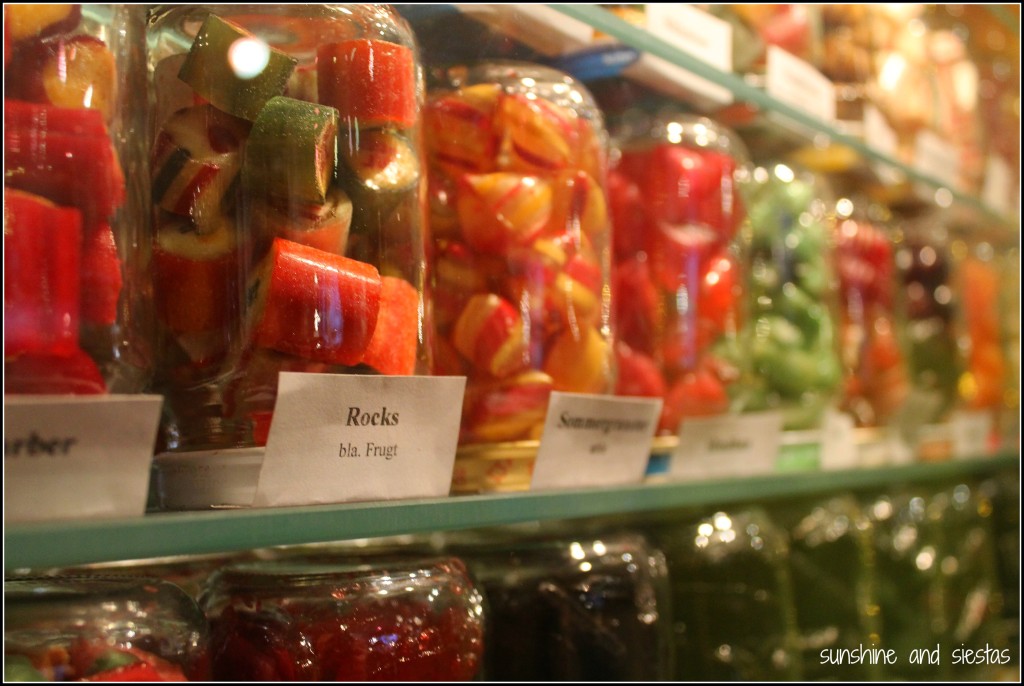
How I wish supermarkets hadn’t given these age-old shops a run for their money (as in, livelihood for skyrocketing rent costs). Ultramarinos sold the gamut of dry goods, from legumes to tins of conservas like fish or vegetables. They were usually narrow and stocked from floor to ceiling with merchandise. There’s still one on Calle Arfe in the Arenal district and another near the Setas on Puente y Pellón, but I feel that their days are contados…
Kiosko: Newspaper kiosk
One of very few words in Spanish that begin with K, these pop-up booths sell newspapers and magazines. Check near touristic sites in major cities if you’re looking for international press or in a Corte Inglés.
Olé tú if you find one of the kiosks that sells candy and cans of pop instead of reading materials. Have small change handy.
Tienda de ropa / regalos / mascotas / deportes: Shop.
Any shop specialized in a certain kind of merchandise can be characterized as a tienda de something. If you’re confused about any of the -erías above, tienda can subsitute whatever you’re looking for.
Agencia de viajes / inmobiliaria / seguros: Agency.
Storefronts that offer a service are typically categorized as an agencia, or agency. Just as banks and bars are easy to trip over, so too are vacation, real estate and insurance agencies.
Locutorio: Internet Café.

When I studied abroad in 2005, Blackberries weren’t on the market nor did Skype exist. We’d check our newly created Facebook accounts on shared computers and call our parents with – shock! gasp! – real phones in little plywood booths. Though they’re not as commonplace as they were a decade ago, locutorios have fax and printer capabilities if you’re in a bind.
OJO!
Opening Hours
If you’re outside of a major city, don’t count on anything being open on a Sunday and midday closures are also typical. Most small shops and businesses will be open from about 9am until 2pm and reopen from 5pm to 8pm. Fridays and Saturday hours are shortened.
An exception is anything food-related: an alimentación is open at seemingly all hours, and panaderías will open Sunday mornings. And if all else fails, bars are usually open daily at normal eating times. Do note that many bars and restaurants close midday, so you’re better off having a pastry to tide you over.

False friends
Not all -erías are created the same: just as you would blush from saying you were pregnant rather than embarrassed, a few false friends exist. If you need money, don’t ask for monería, as this is an adjective for something cute. Go to a banco or cajero automático instead. And a factoría is not always a brick-and-mortar factory but can be used in a metaphorical sense.
Looking for some of my favorites around Seville? Check out my Seville Superlatives list or let me know about your tried and true! And now that you’re a better shopper than the abuelitas in Triana, why not assemble a Cesta de Navidad for your family?





